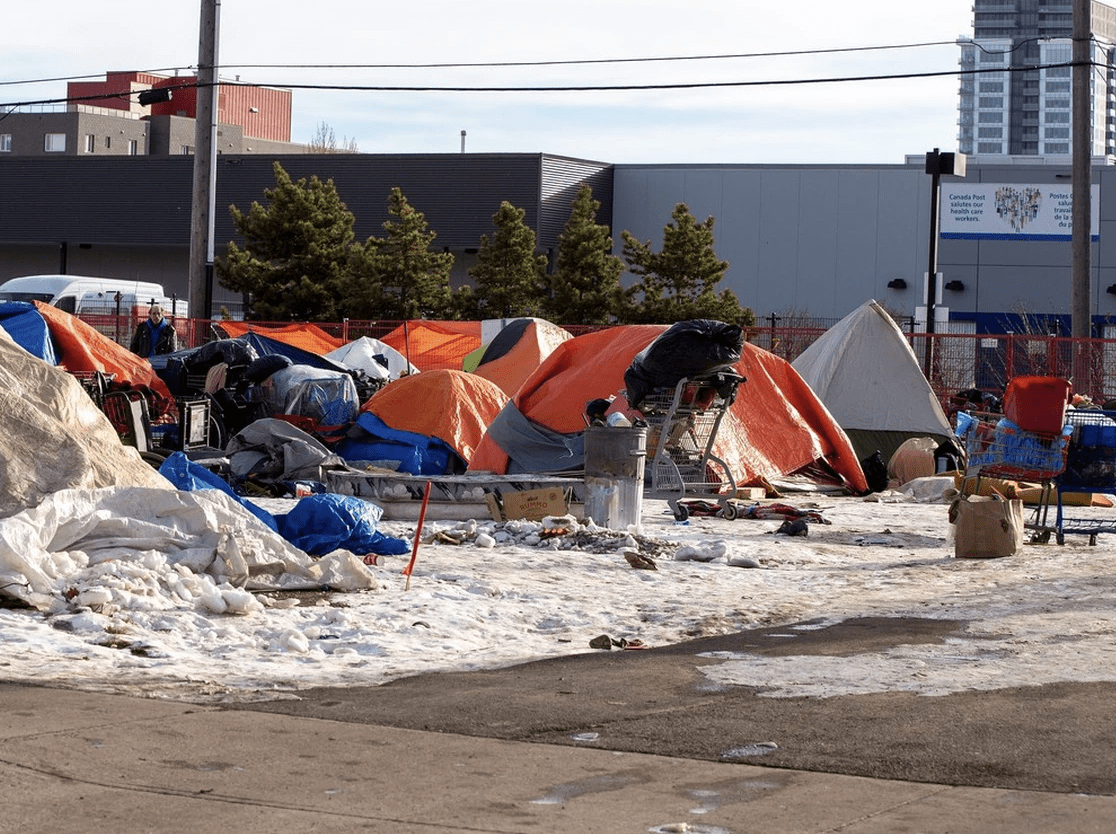Edmonton police planned to eliminate six homeless encampments the week before Christmas. They warned social agencies to keep workers out of the encampments during the evictions and suggested there might be more homeless folk seeking help because of the action.
Outrage inevitably ensued.
Was this just tone-deaf timing? Mounting frustration with a seemingly unsolvable problem? Poor judgment?
Terribly, without the context of it being Christmas, the plan probably made sense to the police. There were two fatal fires in the camps in November. There was a high-profile rape near one encampment this month.
It’s not -30 in Edmonton this festive season. Temperatures hover around freezing so although it’s winter, it’s not kill-you-instantly-without-shelter winter.
No one’s saying it, but there are more people downtown for Christmas and New Year’s events so the camps in question, most of them just east and north of the city core, are under increased scrutiny.
Spurred by outrage about the idea of turfing the homeless, a court challenge was launched by social advocates and an apparent compromise was reached. An injunction was issued to stop immediate clearing of tents, and the complaints about the encampment response will be heard mid-January.
But police can still clear out high-risk encampments before Christmas if residents and social agencies are informed ahead of time — so no surprise sweeps — and if there are adequate shelter spaces to house displaced residents.
Shutting these particular encampments doesn’t translate to a magical solution. Many of the homeless in those tent communities will melt away into other similar accommodations through the city river valley and city-core waste grounds.
The response from politicians at both the municipal and provincial level has been dispiriting.
Mayor Amarjeet Sohi put out an Instagram statement that he didn’t hear about the police plan until Dec. 15, the day before the email to social agencies came to light. He said a review of the decision-making model and communication plan is needed.
He also acknowledged that permanent housing solutions and mental health and addiction supports are needed.
“Council and our partners in government have made significant into housing and support for vulnerable Edmontonians, but there is still much work to do,” wrote Sohi.
Premier Danielle Smith came out on X supporting the police plan and putting the homeless camp issue into a law and order frame.
She retweeted a news report about the rape near a river valley camp.
“Vulnerable people in and around these gang-operated encampments are victims of crime and abuse, it can no longer be tolerated. I fully support the decision by the Edmonton police service to remove illegal encampments.”
A story about the fire risk in the camps prompted her to tweet: “Another very real example of how organized crime operating drug markets is making encampments dangerous for our most vulnerable and the surrounding community. Our province has worked hard to ensure that safe shelter spaces are available to those who need them.”
So both levels of government claim to be putting plenty of money into the problem, and yet homelessness continues.
The provincial government’s response has stressed that homeless shelters are not at capacity in Edmonton.
There are about 3,000 without housing and somewhere between 1,100 and 1,388 shelter spaces available depending on who’s providing the numbers. By next year provincial funding will provide 1,700 spaces total.
The gap between the folks in encampments and those seeking institutional temporary beds is pretty obvious. Residents of encampments say there is rampant crime in the shelters and they feel safer in outdoor tents.
Shelters don’t accept clients who are high or inebriated or who have pets. Some mentally ill homeless are not competent to seek shelter help or have been banned due to past disruptive behaviour.
Ask the social workers, police, firefighters and neighbours around Edmonton’s encampments just how heartbreaking it is to try to find a solution to homelessness.
Shelters are not that solution. Access to appropriate housing seems like the obvious answer but it’s far from an easy fix when there are all sorts of underlying mental health and addiction issues along with the need for public dollars for construction and in some cases ongoing supervision of the accommodation.
In the meantime, the homeless in city encampments are surviving as best they can in perilous circumstances. First and foremost, no matter what time of year it is, they should be treated with the dignity and compassion they deserve.






